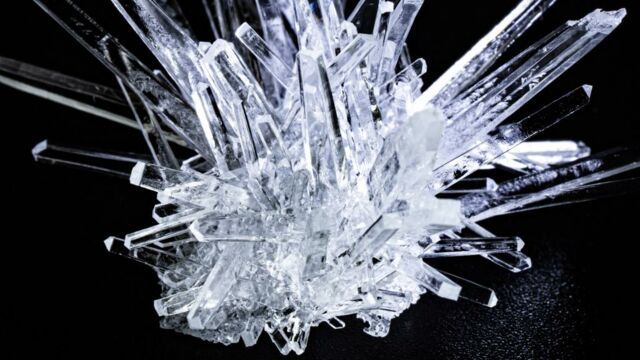A prehistoric crystal may contain 'ancient life' inside and geologists want to open it

A life form from 830 million years ago could be contained in a crystal. To find out for sure, geologists want to split it open.
A screenwriter looking for a good story for a horror or adventure film that goes wrong couldn't have found a better way to start a post-apocalyptic story: an 830 million-year-old crystal is about to be split open by geologists to examine the cells inside. The problem is, that they have no idea what might happen.
Discover our latest podcast
Beautifully preserved cells
An extremely ancient form of life has just been found by scientists: cells surviving inside an 830-million-year-old salt crystal found in central Australia. The researchers used advanced ultraviolet imaging techniques and were able to identify these organic solids.
More under this adMore under this adThese cells could still be alive because they are extremely well preserved in their glittering habitat. Normally, it is impossible for crystallised salt to keep cells alive, but they appear to move when the crystal is manipulated, suggesting otherwise. Unlike fossils, they are mobile and could contain a wealth of information about the beginning of life on Earth.
Some organisms manage to survive in a very salty environment by shrinking and reducing their biological activity, such as algae.
More under this adMore under this adBeware of the virological risk
In the video, it is possible to see the bubble containing the cells and enclosing the micro-organisms in question: it is in order to analyse the contents of this bubble that the scientists have put forward the hypothesis of cutting the crystal in two in order to extract the life form.
More under this adMore under this adBut the enigmatic question of safety remains: could this manipulation present a risk for humans? After suffering a global pandemic whose exact origin is still unknown, it might not be a good idea to rush into releasing unknown 830 million-year-old bacteria into our world.
The virological risk is on the minds of scientists, as Kathy Benison, a geologist at West Virginia University, points out:
More under this adMore under this adIt sounds like a really bad B-movie, but a lot of detailed work has been going on for years trying to figure out how to do this in the safest way possible.
Other researchers are more radical and fearless, arguing that an environmental organism that has never seen a human being cannot get inside them and create disease.
More under this adMore under this adIn any case, geologists will do everything they can to make the most of the information provided by this crystal.
This article was translated from Gentside FR.
Read more:
⋙ Why did the Maya have very good dental hygiene?
⋙ A huge sinkhole with an entire ancient forest inside has been discovered
⋙ Ruins of a mysterious 3400-year-old empire discovered (PHOTOS)